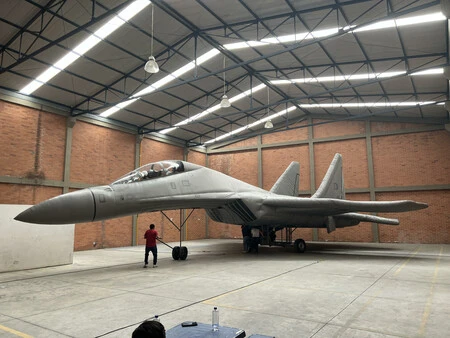SOURCE: AFI


The Indian Air Force (IAF) is set to enhance the survivability of its frontline airbases by procuring aircraft decoys modeled after its Rafale, Su-30 MKI, and Tejas fighters. These decoys, designed to mimic the visual and radar signatures of the real aircraft, will be deployed at forward runways to deceive enemy forces during a surprise attack, providing a critical layer of passive defense against aerial and missile strikes. The initiative reflects the IAF’s growing emphasis on safeguarding its assets amid rising regional tensions and the evolving threat of precision-guided munitions.
The plan, currently in the preliminary stages, aims to protect key bases along India’s northern and western borders, where aircraft like the Rafale, Su-30 MKI, and Tejas are stationed to counter potential aggression from China and Pakistan. By deploying realistic decoys, the IAF seeks to confuse enemy reconnaissance and targeting systems, drawing fire away from operational aircraft and infrastructure.
Aircraft decoys have long been a staple of military strategy, used to mislead adversaries and preserve combat strength. Modern iterations, however, go beyond simple inflatable mock-ups, incorporating materials and designs that replicate radar cross-sections (RCS), infrared signatures, and visual profiles of actual aircraft. The IAF’s decoys for the Rafale, Su-30 MKI, and Tejas will be tailored to match each platform’s distinct characteristics—ensuring that enemy satellites, drones, or fighter jets mistake them for the real thing.
“The idea is to create uncertainty,” an IAF official explained. “In a surprise attack, every minute counts. If the enemy wastes munitions on decoys, it gives us time to scramble jets, activate defenses, or reposition assets.” Forward bases like Leh, Thoise, and Ambala—home to Rafale and Su-30 squadrons—are particularly vulnerable to sudden strikes, given their proximity to contested borders. The Tejas, deployed increasingly at bases like Sulur and Jodhpur, also necessitates protection as its numbers grow.
These decoys could range from inflatable structures with radar-reflective coatings to modular fiberglass or metal frames, deployable in minutes by ground crews. Some may include heat-emitting elements to simulate engine signatures, countering infrared-guided weapons. The IAF is likely to draw inspiration from global practices—such as the U.S. Air Force’s use of decoys in the Gulf War or Russia’s inflatable MiG-31s—while tailoring the designs to its specific aircraft and operational needs.
While the IAF has yet to issue a formal tender, sources suggest the project could tap India’s domestic defense industry under the “Make in India” framework. The Defence Research and Development Organisation (DRDO), which has experience with deception technologies like radar-reflective chaff, could lead development, partnering with private firms like Larsen & Toubro or Bharat Electronics Limited (BEL). Local production would reduce costs—estimated at ?5-10 crore for a batch of 50-100 decoys—while aligning with self-reliance goals.
The decoys’ specifications will likely emerge through a Request for Information (RFI) by mid-2025, with procurement targeted for 2027-2028. The IAF may initially deploy them at high-threat bases before expanding to secondary airfields. Integration with existing camouflage, concealment, and deception (CCD) measures—such as aircraft shelters and dummy runways—will maximize their effectiveness.
Unlike billion-rupee fighter jets or missile defenses, decoys offer a relatively inexpensive way to enhance survivability. A single Rafale costs over ?1,600 crore, while a Su-30 MKI exceeds ?400 crore—making their protection a priority. If a ?10 lakh decoy absorbs a ?5 crore missile, the cost-benefit ratio is stark. Moreover, decoys require minimal maintenance and can be rapidly replaced, ensuring sustained deception throughout a conflict.
NOTE: AFI is a proud outsourced content creator partner of IDRW.ORG. All content created by AFI is the sole property of AFI and is protected by copyright. AFI takes copyright infringement seriously and will pursue all legal options available to protect its content.